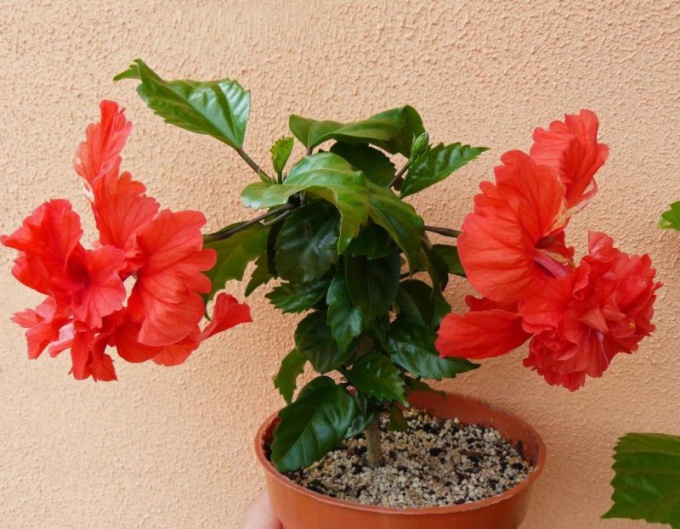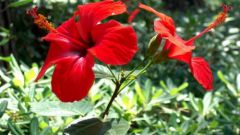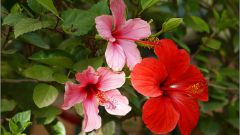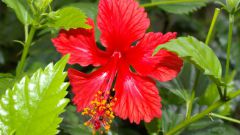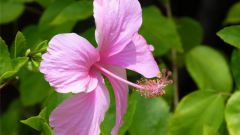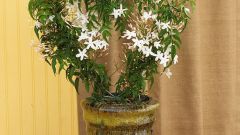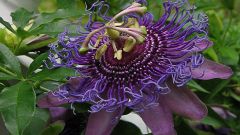Particularly care for Chinese rose
Chinese rose is a photophilous plant: it thrives in well-lit areas, and the lack of light hibiscus is poorly developed and virtually no blooms. At the same time, the plant cannot be placed under direct sunlight (especially in summer): the perfect location – a window facing West or East. In the warm season the pot, which grows Chinese rose can make a garden, terrace or balcony.
In the summer it is recommended to contain a hibiscus at a temperature of 21-25C. In winter, the indoor temperature can drop to 13-15°. Also, the Chinese rose should be protected from drafts.
From spring to autumn, watering should be abundant, and in winter is moderate. In any case it is impossible to waterlogged soil or, conversely, to prevent the drying earthen coma: must be found the Golden mean. An hour after watering the soil in the pot should be carefully loosened. Also morning and evening you need to spray the leaves of hibiscus (with strong heat do the procedure more often). Periodically as Chinese rose, you can arrange a shower, washing off the leaves with dust.
Spring (March-April), the young plants are transplanted into a larger pot. To do this, prepare a neutral substrate, consisting of 1 part humus earth, 1 part peat lands, 1 part sand and 2 parts of sod land. In addition, this mixture can introduce a bit of charcoal.
Since April, Chinese rose feed 1 to 20 days special fertilizers intended for flowering houseplants. In August this feeding is stopped.
Diseases of hibiscus
Improper care causes the development of diseases in hibiscus. So, if the leaf blades on the plant a lot and they are green, but the China rose does not bloom in the soil made too much nitrogen fertilizer. Besides this problem may occur if the room the plant is not getting enough light or it gets enough moisture.
Appearing on the hibiscus yellow leaves suggests that for watering potted plants has been used too cold water. Another reason for this phenomenon – chlorosis.
If Chinese rose intense drops leaves, this may indicate that it is not enough light.
The main "enemies" of hibiscus – ordinary aphids and spider mites. Combating provides for local processing of the leaves and stems of plants with a soap solution and the use of special preparations.
